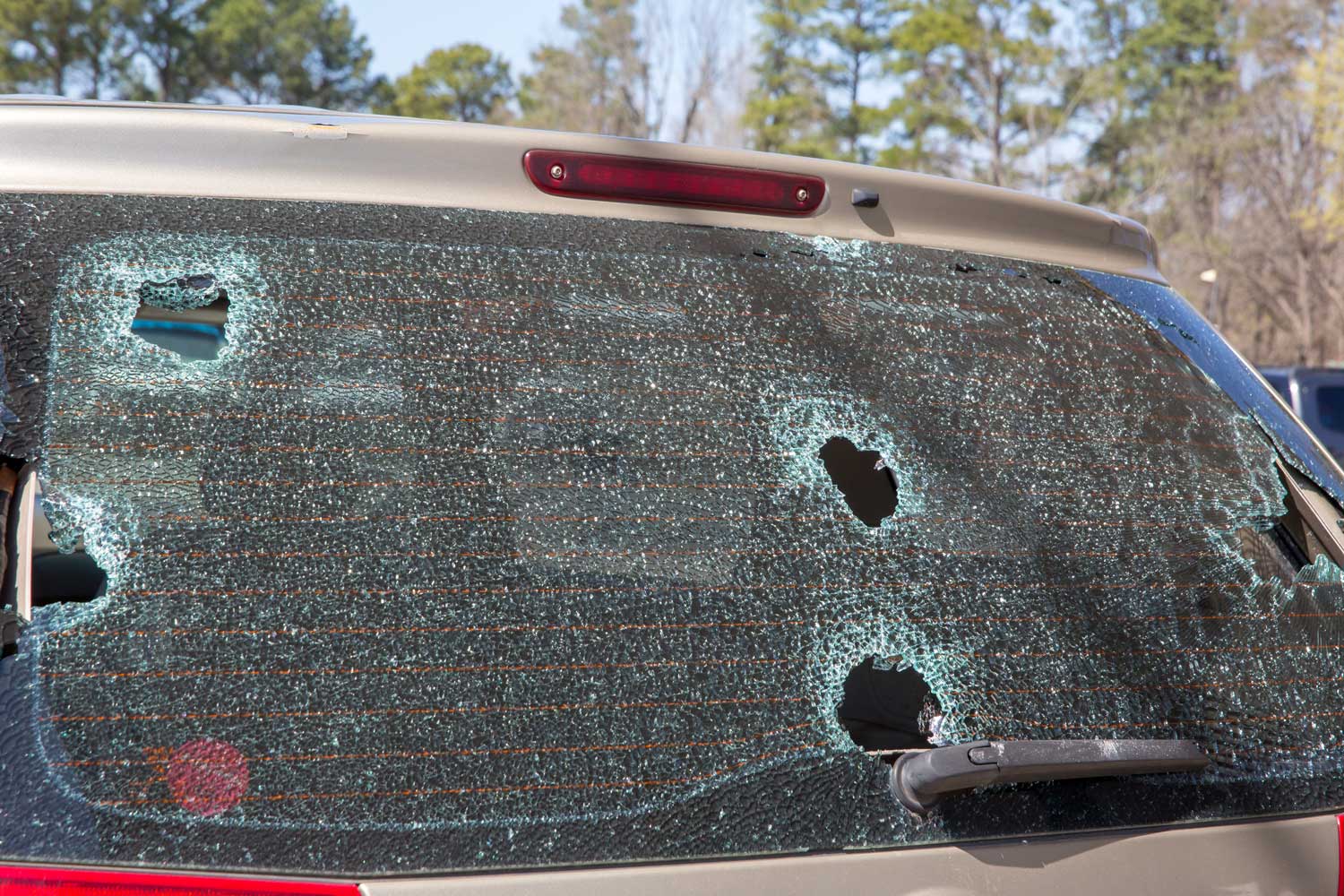How to Spot a Car With Prior Hail Damage
Dents aren’t dealbreakers, but how they were addressed might be.
 Getty Images
Getty Images
Automakers design cars to withstand the majority of what Mother Nature throws at them, but there’s little they can do to protect against balls of ice falling from the sky. Hailstorms can ravage a car's exterior, causing thousands of dollars’ worth of damage. While repair shops can make dents disappear, it may still pay to know whether that car you’re thinking about ever saw such damage. Unnoticed marks become your problem after purchase, and if the seller used cheap replacement parts to rectify the issue, the car may not have the same structural integrity as before. Here are signs to make sure you’re getting a good deal.
Check the Body for Dents
No matter how obvious, start by looking for dents on the roof, hood, and trunklid. Hail damage often isn't uniform, leaving dents of varying sizes. The dents could be small and might not cover the entire vehicle. You should also check the doors and fenders, as strong winds can send hailstones sideways.
Look for Replacement Glass
Another potential sign that a car suffered from hail damage is if it has replacement glass. Generally, a vehicle’s original windshield will have the carmaker's name and logo on it—often in one of the corners—whereas an aftermarket windshield might not have any branding. Do note, however, that an owner might replace a cracked windshield with a factory one; that replaced glass doesn't necessarily mean a car was in a hailstorm. But if you see new glass combined with some of the other red flags in this article, you should probably ask a few questions.
Examine Closely for Shoddy Repairs
Most comprehensive insurance policies will cover a car for hail damage, but if the repair estimate is less than or close to the deductible amount, an owner might choose not to make a claim and fix the issues themselves. It's in these cases where you could run into the most trouble.
Paintless dent repair (PDR)—wherein skilled technicians address body damage from the opposite side of the sheetmetal, pressing and manipulating dents back into shape—is especially handy for dealing with hail damage. In many ways, PDR is an art, and shops that specialize in it have many years of experience performing such repairs. As such, this is a repair best left to the professionals. Be wary of an owner fixing their hail-damaged car out-of-pocket using someone less skilled—or worse, attempting to fix it themselves. Signs of a bad PDR job include:
- Ripples in the paint
- Pimple-like high spots created by a tool that was too sharp for the task of delicate metalwork
Another cost-saving fix an owner might attempt is to have a hail-damaged hood, trunklid, or other body panel replaced with an aftermarket piece. This solution might look perfectly fine, but it presents a few problems. For starters, aftermarket parts are not crash tested, so although a hood or door might look like the original from the outside, there's no way to tell if it’ll perform as well as the OEM part in a collision. Secondly, fitment might not be as good as the original, so you could end up with uneven (and unsightly) panel gaps. OEM body panels will have a sticker identifying them as such. To spot a replacement body part, look for mismatched paint—including differences in color, finish, and those telltale panel gaps.
Written by humans.
Edited by humans.
 Alex Nishimoto
Alex NishimotoAlex Nishimoto is a Los Angeles-based writer with 15 years experience covering the auto industry. He spent much of his career as an editor on staff at a major automotive magazine, testing cars, writing articles, and assisting on segment-defining comparison tests. When he's not writing about cars, he's wrenching on his E30-generation BMW 325is, which he's owned since college and plans to restore one day.
Related articles
View more related articles